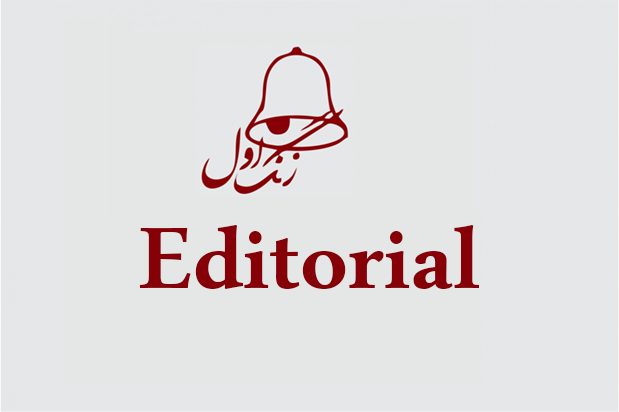The new season of target killing of Hazaras began in 2015 in Zabul. At the time, ISIS fighters were active in at least three districts in Zabul. The militants in Zabul were set up by a splinter group of the Taliban led by Mullah Mohammad Rasool. At the same time, heavy fighting was taking place in Zabul between the forces of Mullah Mohammad Rasool and Mullah Akhtar Mohammad Mansour. Their war was over the leadership of the Taliban, after the revelation of Mullah Mohammad Omar’s death, the group went into a leadership crisis.
The famous hostage-taking in Zabul six years ago was carried out by ISIS fighters who were in the province in cooperation with Mullah Mansour Dadullah’s fighters. Mullah Mansour Dadullah was one of the ruthless commanders of the Taliban, who during his time in Zabul served as the deputy branch of the Taliban. At the time, Mullah Abdul Manan Niazi was acting as a spokesman for the Islamic state and a senior member of the Taliban leadership council. After the assassination of Mullah Mansour Dadullah, it was Mullah Abdul Manan Niazi who succeeded him.
Mullah Abdul Manan Niazi, who was recently killed in Herat, claimed at the time that Hazaras in Jaghori district were taking part in the fight against them in Khak-e-Afghan and Dai-e-Chupan districts and had provided aid to Mullah Akhtar Mohammad Mansour’s fighters. He also claimed that the Islamic Revolutionary Guard Corps of Iran had sent two men as advisers in the Zabul war to help Mullah Akhtar Mohammad Mansour’s fighters. Afte, Mullah Mansour Dadullah’s death, ISIS fighters were repressed in Zabul. The center of operations of the splinter branch of the Taliban relocated to the western part of the country, especially in Herat. Following this relocation, Hazara-Shiite mosques in Herat were targeted by terrorist attacks, the most famous of which was the Jawadiya Mosque.
Since 2015, dozens of targeted attacks have been carried out against the Hazara and Shiite population in various provinces, including Kabul, Herat, Ghor and Logar. ISIS has claimed responsibility for most of the attacks. The group, which has been said to have been annihilated in Afghanistan since the beginning of political talks between the United States and the Taliban, or at least has no clear centrality, and whose activities against the government or the Taliban have not been tangible. Some of the attacks on Hazaras and Shiites over the past two years have not been claimed by any group. This has led people to ask the government who is behind these attacks and why it is focusing only on Hazaras and Shiites? Another question is whether ISIS is active in Afghanistan. If not, how is it that they have claimed responsibility for some of the attacks on Hazaras and Shiites? If it is active, then why did the government announce the groups annihilation to the people?
The Taliban have so far denied responsibility for targeted attacks on civilians, especially Hazaras and Shiites. The government has repeatedly accused the group of carrying out the attacks. However, the government has not yet provided the necessary documents to show that there is no group other than the Taliban behind the attacks on the Hazaras and Shiites. The government’s argument that if the Taliban have not carried out the attacks then they definitely have played a part in it, is very weak and unjustifiable.
What are the purpose of these attacks? Are Hazaras at risk of “genocide”? Are these massacres a “genocide”? What measures has the government taken against these attacks? What has the government done in the past six years? Why is the government not taking any actions to stop to it but only says that it strongly condemns these attacks? These are the questions of every informed citizen of Afghanistan. The government must answer these questions. Silence is not the answer.
If the government does not act transparently in dealing with the crimes committed against the Hazaras and Shiites and does not provide convincing answers to the people’s questions, it will be a suspect in the eyes of public. There are already many doubts in the minds, within the victim community, and the popular believe is that the government does not care about their lives and does not want to prevent their killing. Many people in the victim community think that the government, by taking on the role of spectator, is only seeking the political exploitation of these crimes and intends to use them globally as a weapon against the Taliban. The government itself is responsible for the formation of such suspicions as it has not been able to eliminate the ambiguity surrounding the systematic crimes committed against Hazaras and Shiites.
If the government considers its survival to depend on the support of the people, it should not allow itself to become a suspect in the eyes of the people. When the government is unable to properly fulfill its responsibilities, it is for certain that the people will have negative perception towards the government. Transparency in handling these crimes and identification of the perpetrators, as well as taking appropriate measures to prevent the recurrence of these crimes, is the only way to change the negative perception of the people towards the government. Those in charge must understand that a negative and suspicious view of the government is dangerous. This perception can end up hurting the government in the long run and widen the crack between the victim community and the government.












